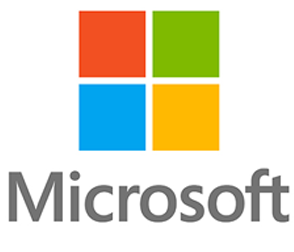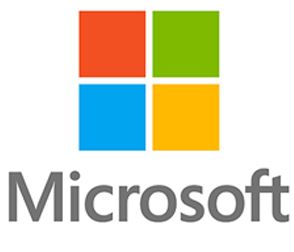Microsoft Office Transition from Office
Description:
You've used Microsoft Office 2007 or Office 2010 to create various types of business materials, from documents in Word to spreadsheets in Excel to presentations in PowerPoint. Perhaps you use Outlook to manage your calendar, contacts, and email; or Access to manage inventory and trouble tickets.
However you use Office, the fact is the Office suite of applications is the de-facto standard for business productivity software. Each new release of Office builds upon the successes of the previous generations.
This course builds upon the foundational Microsoft Office 2007/2010 knowledge and skills you’ve already acquired. It focuses on the enhanced features you’ll want to leverage to improve the way you manage, organize, present, and distribute your company’s data and information.
You’ll explore a variety of enhancements, from Word’s ability to edit PDF files to the new Flash Fill functionality in Excel that dramatically increases the speed at which you can add data to a spreadsheet. You’ll discover how the cloud has been deeply integrated into your Office experience and how collaborating with colleagues has never been easier.
This Microsoft Office 2016: Transition from Office 2007/2010 course will help you bridge the gap from the version you already know and love, to the latest release of Microsoft’s flagship productivity suite.
Course Objectives:
In this course, you will explore the new features available in Office 2016 applications.
What you will learn:
- Identify new and enhanced features that are common across all applications in Office 2016.
- Modify documents using Microsoft Word 2016.
- Enhance worksheet data using Microsoft Excel 2016.
- Augment a presentation using Microsoft PowerPoint 2016.
- Create a database using Microsoft Access 2016.
- Utilize mail, calendars, contacts, and tasks in Microsoft Outlook 2016.
Target Student:
This course is designed for individuals who already have foundational knowledge and skills in Office 2007 or Office 2010, and are interested in transitioning from an earlier Office version to Office 2016.
This course is also designed for those individuals who may be interested in some of the new features available in the Office 2016 suite of products.
Prerequisites:
To ensure your success in this course, you will need to have familiarity with either the Office 2007 or Office 2010 suite of products, including Word, Excel, PowerPoint, Access, and Outlook. Additionally, you need to be familiar with how Windows® 10 operates. To meet these prerequisites, you can take any one or more of the following courses:
- Microsoft® Office Word 2010: Part 1
- Microsoft® Office Excel® 2010: Part 1
- Microsoft® Office PowerPoint® 2010: Part 1
- Microsoft® Office Access® 2010: Part 1
- Microsoft® Office Outlook® 2010: Part 1
- Microsoft® Windows®10: Transition from Windows® 7
Course-specific Technical Requirements
Hardware
For this course, you will need one computer for each student and one for the instructor. Each computer will need the following minimum hardware configurations:
- 1 GHz or faster 32-bit (x86) or 64-bit (x64) processor (You may want to check that your processor meets Microsoft's requirements prior to installation.)
- Projection system to display the instructor's computer screen
- 2 gigabyte (GB) RAM (32-bit) or 4 GB RAM (64-bit)
- 16 GB (32-bit) or 20 GB (64-bit) hard drive with at least 3 GB free hard disk space available for Office 2016 installation
- DVD-ROM drive
- Keyboard and mouse (or other pointing device)
- 1,024 x 768 resolution SVGA monitor
- Network card and cabling for local network access
- Internet access with no password required (through Wi-Fi, cabled Ethernet, or mobile broadband)
- (Optional) Printer or an installed printer driver
Software
- Microsoft® Windows® 10
- Microsoft® Office Professional 2016
Course Content
Lesson 1: Getting Started with Microsoft Office 2016
Topic A: Common Features
Topic B: Office 2016 and the Cloud
Lesson 2: Working with Microsoft Word 2016
Topic A: Edit a PDF
Topic B: Work with Tables
Topic C: Embed Videos
Topic D: Edit Documents
Topic E: Read Documents
Lesson 3: Working with Microsoft Excel 2016
Topic A: Streamline Workflow in Excel Using Templates
Topic B: Accelerate Data Entry with Flash Fill
Topic C: Incorporate Charts
Topic D: Analyze Data
Lesson 4: Working with Microsoft PowerPoint 2016
Topic A: Apply a Theme
Topic B: Incorporate Objects
Topic C: Leverage the Enhanced Presenter View
Topic D: Collaborate with Others on a Single Presentation
Lesson 5: Working with Microsoft Access 2016
Topic A: Explore Web Apps
Topic B: Utilize Templates in Access
Lesson 6: Working with Microsoft Outlook 2016
Topic A: Navigate Through Mail, Calendars, People, and Tasks
Topic B: Manage Your Mailbox
SCHEDULE DATES - 35 Hour Hands-On Program
Microsoft Office 2016: Transition from Office 2007/2010
9AM - 5PM (Weekdays)
Start Date & Graduation Date
03/21/2022 to 03/25/2022
5 Days (35 Hours) a Week for 1 Week
|
||||
Microsoft Office 2016: Transition from Office 2007/2010
9AM - 5PM (Weekdays)
Start Date & Graduation Date
04/11/2022 to 04/15/2022
5 Days (35 Hours) a Week for 1 Week
|
||||
Microsoft Office 2016: Transition from Office 2007/2010
9AM - 5PM (Weekdays)
Start Date & Graduation Date
05/02/2022 to 05/06/2022
5 Days (35 Hours) a Week for 1 Week
|
||||
Microsoft Office 2016: Transition from Office 2007/2010
9AM - 5PM (Weekdays)
Start Date & Graduation Date
06/13/2022 to 06/17/2022
5 Days (35 Hours) a Week for 1 Week
|
||||
Microsoft Office 2016: Transition from Office 2007/2010
9AM - 5PM (Weekdays)
Start Date & Graduation Date
07/11/2022 to 07/15/2022
5 Days (35 Hours) a Week for 1 Week
|
||||
Microsoft Office 2016: Transition from Office 2007/2010
9AM - 5PM (Weekdays) |
Start Date
Graduation Date |
03/21/2022
03/25/2022 |
5 Days (35 Hours) a Week for 1 Week | |
Microsoft Office 2016: Transition from Office 2007/2010
9AM - 5PM (Weekdays) |
Start Date
Graduation Date |
04/11/2022
04/15/2022 |
5 Days (35 Hours) a Week for 1 Week | |
Microsoft Office 2016: Transition from Office 2007/2010
9AM - 5PM (Weekdays) |
Start Date
Graduation Date |
05/02/2022
05/06/2022 |
5 Days (35 Hours) a Week for 1 Week | |
Microsoft Office 2016: Transition from Office 2007/2010
9AM - 5PM (Weekdays) |
Start Date
Graduation Date |
06/13/2022
06/17/2022 |
5 Days (35 Hours) a Week for 1 Week | |
Microsoft Office 2016: Transition from Office 2007/2010
9AM - 5PM (Weekdays) |
Start Date
Graduation Date |
07/11/2022
07/15/2022 |
5 Days (35 Hours) a Week for 1 Week | |
- CompTIA
- CISCO
- EC-Council
As an authorized CompTIA partner, Institute of Information Technology offers up-to-date CompTIA training and certification courses. A CompTIA certification is an international industry credential.
- CompTIA A+
- CompTIA Network+
- CompTIA A+ and Network+ Boot Camp
- IT Professional Bootcamp
- CompTIA Security+
- CompTIA Server+
- CompTIA Project+
- CompTIA Cybersecurity Analyst (CySA+)
- CompTIA Train The Trainer (CTT+)
- CompTIA Cloud+ Training
- CompTIA PenTest+ Certification Training
- CompTIA CDIA+
- CompTIA Linux+ Powered by LPI
- CompTIA Advanced Security Practitioner (CASP) Training
- Network and System Administrator
- Computer Support Specialist
- Computer Systems Networking and Telecommunications Specialist
- Network and System Administrator Manager
- Computer Support Aadministrator
- Computer And Information Systems Security Analyst
- Computer Systems Networking and Telecommunications Administrator
- Computer Systems Networking And Telecommunications Manager
- Network And System Administrator Manager Professional
Institute of Information Technology is honored to be an authorized CISCO Network Academy Training Institute. CISCO is the worldwide leader in networking. CISCO has shaped the future of the internet by transforming how people connect, communicate and collaborate.
- CISCO MASTER
- Interconnecting Cisco Networking Devices, Part 1 - ICND1
- Interconnecting Cisco Networking Devices, Part 2 - ICND2
- CCNA Routing and Switching
- CCNP Routing and Switching
- CISCO-Individualized CCNA Routing and Switching
- CCNA Security
- CCNP Security
- CCNA Collaboration
- CCNP Collaboration
- CCNA Service Provider
- CCNP Service Provider
- Implementing Cisco Collaboration Devices
- Implementing Cisco Video Network Devices
- Troubleshooting Cisco IP Telephony & Video
- Implementing Cisco Collaboration Application
- Implementing Cisco IP Telephony & Video, Part 1
- Implementing Cisco IP Telephony & Video, Part 2
Institute of Information Technology has the honor of being an authorized EC-Council Accredited Training Center. EC-Council is the worldwide leader in Cyber Security course content. EC-Council has changed the future of the internet by transforming how people deal with and prevent cyberattack.
- Hacking Apprentice
- Hacking Professional
- Cybersecurity Master
- Hacking Master
- Certified Ethical Hacker Training Program C| EH
- Certified Ethical Hacker Practical C| EH
- Certified Network Defender Certification C| ND
- Licensed Penetration Tester Master L| PT (Master)
- Computer Hacking Forensic Investigator Certification C| HFI
- EC-Council Certified Security Analyst (ECSA) Penetration Testing
- Certified Secure Computer User C| SCU
- Certified Network Defense Architect C| NDA
- Project Management in IT Security P| MIT
- EC-Council Network Security Administrator E| NSA
- Certified Cyber Marketing Professional C| CMP
- EC- Council Certified Incident Handler Program E| CIH
- EC-Council Certified Security Specialist E| CSS
- EC-Council Certified Secure Programmer .NET E| CSP
- EC-Council Certified Disaster Recovery E| CDR
- Virtualization Technology Professional E| CVT
- EC-Council Certified Encryption Specialist E| CES
- EC-COUNCIL DISASTER RECOVERY PROFESSIONAL E| DRP
- Advanced Network Defense (CAST 614)
- Certified Application Security Engineer (CASE)
- Cyber Security Boot Camp

